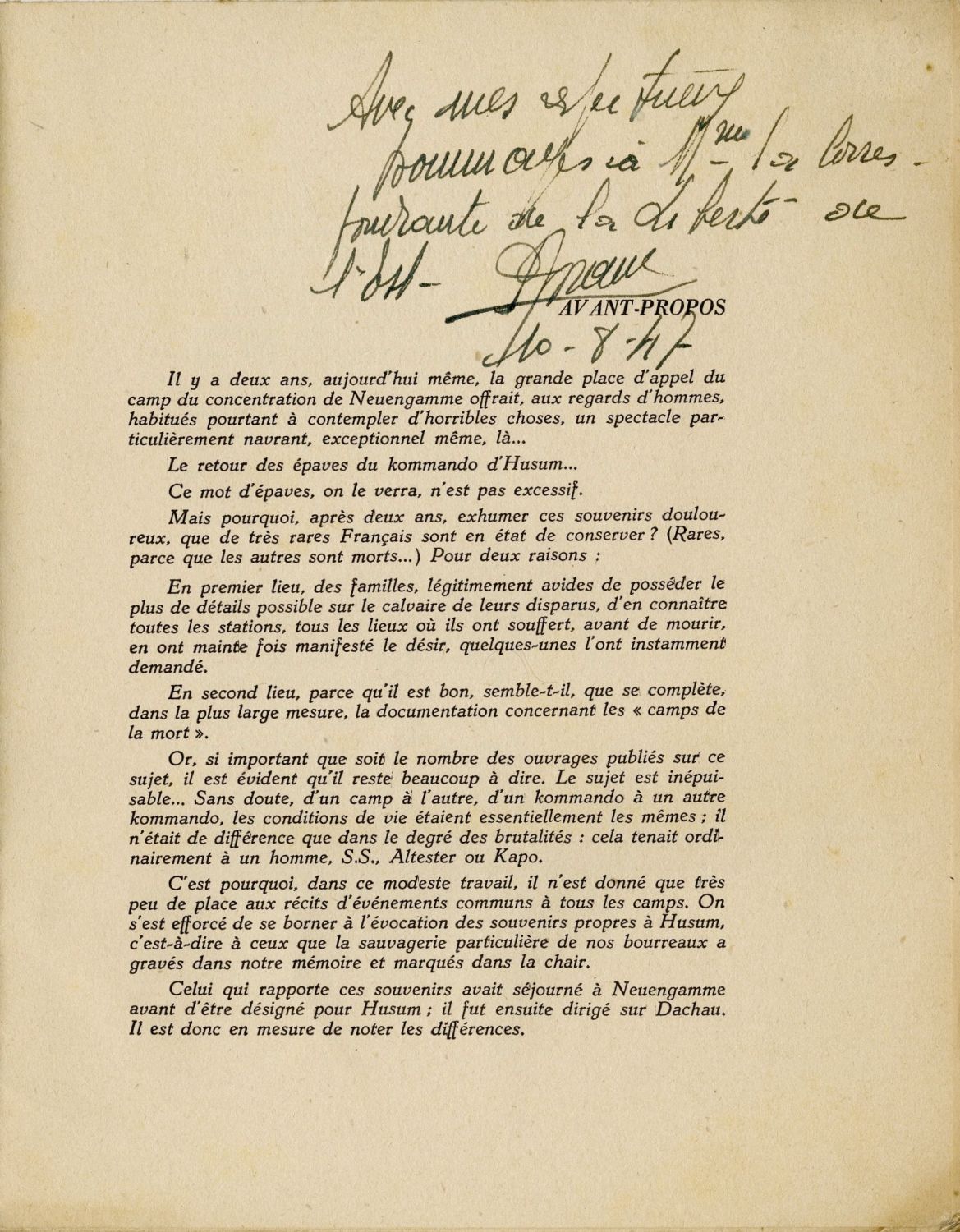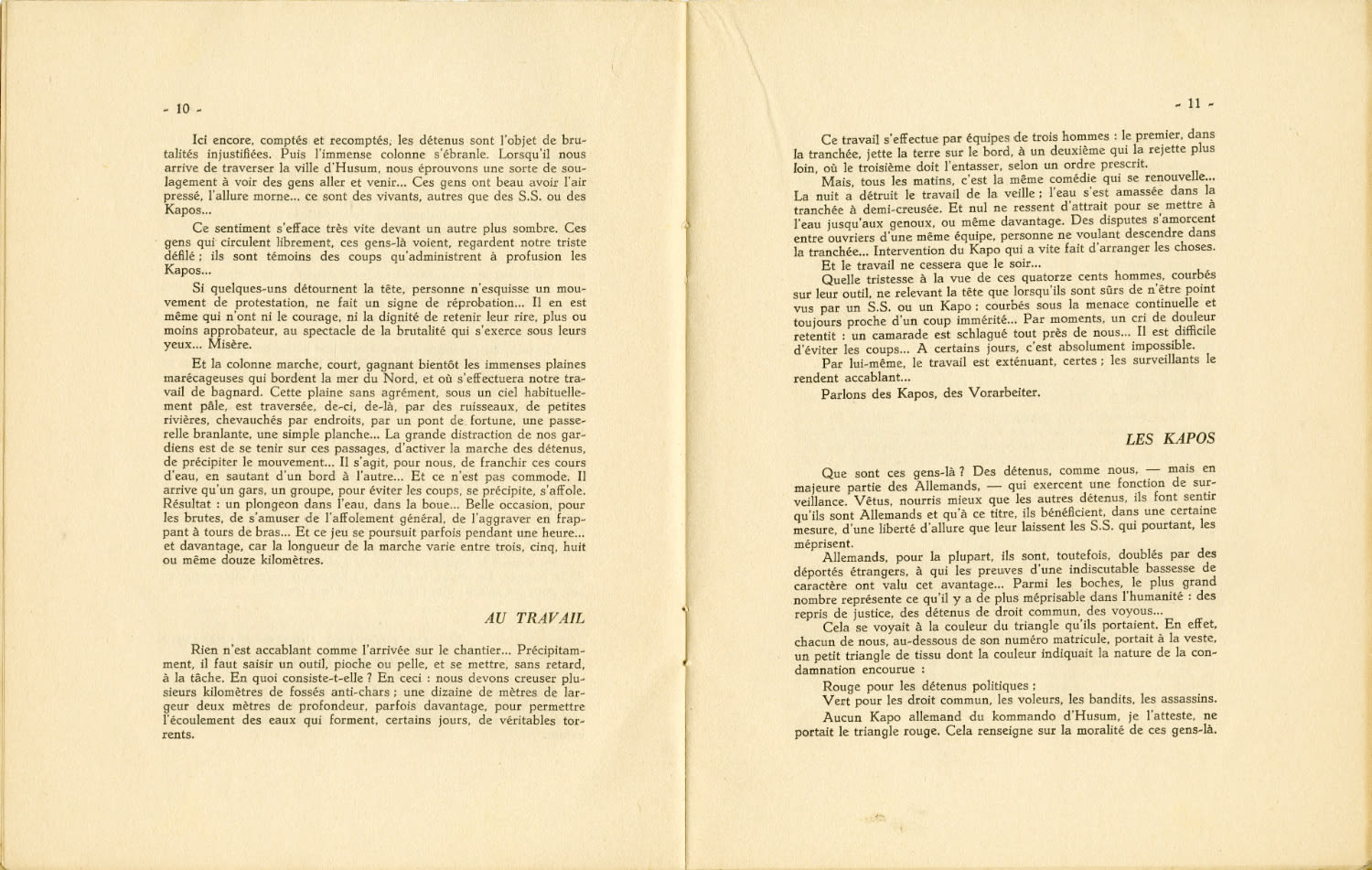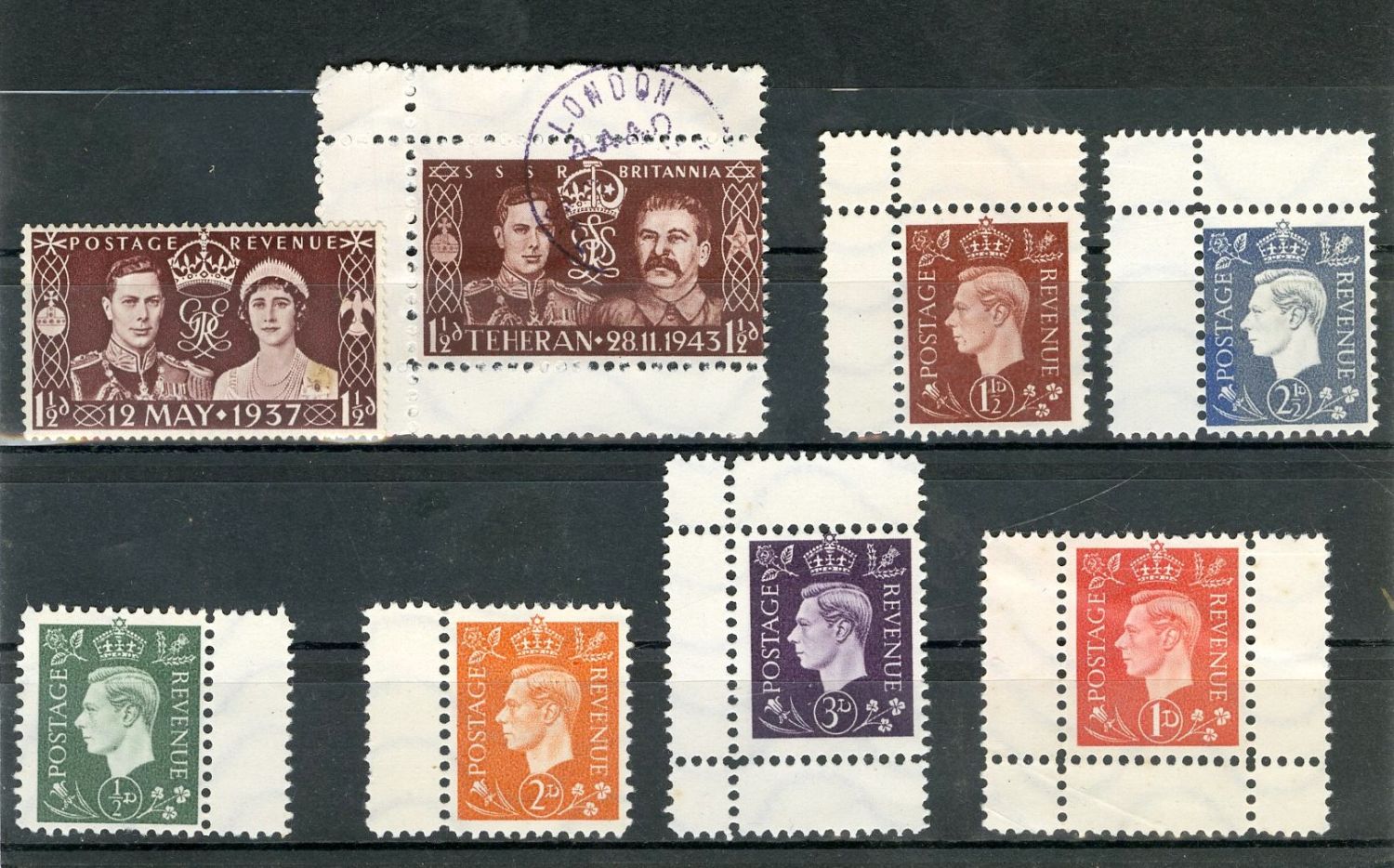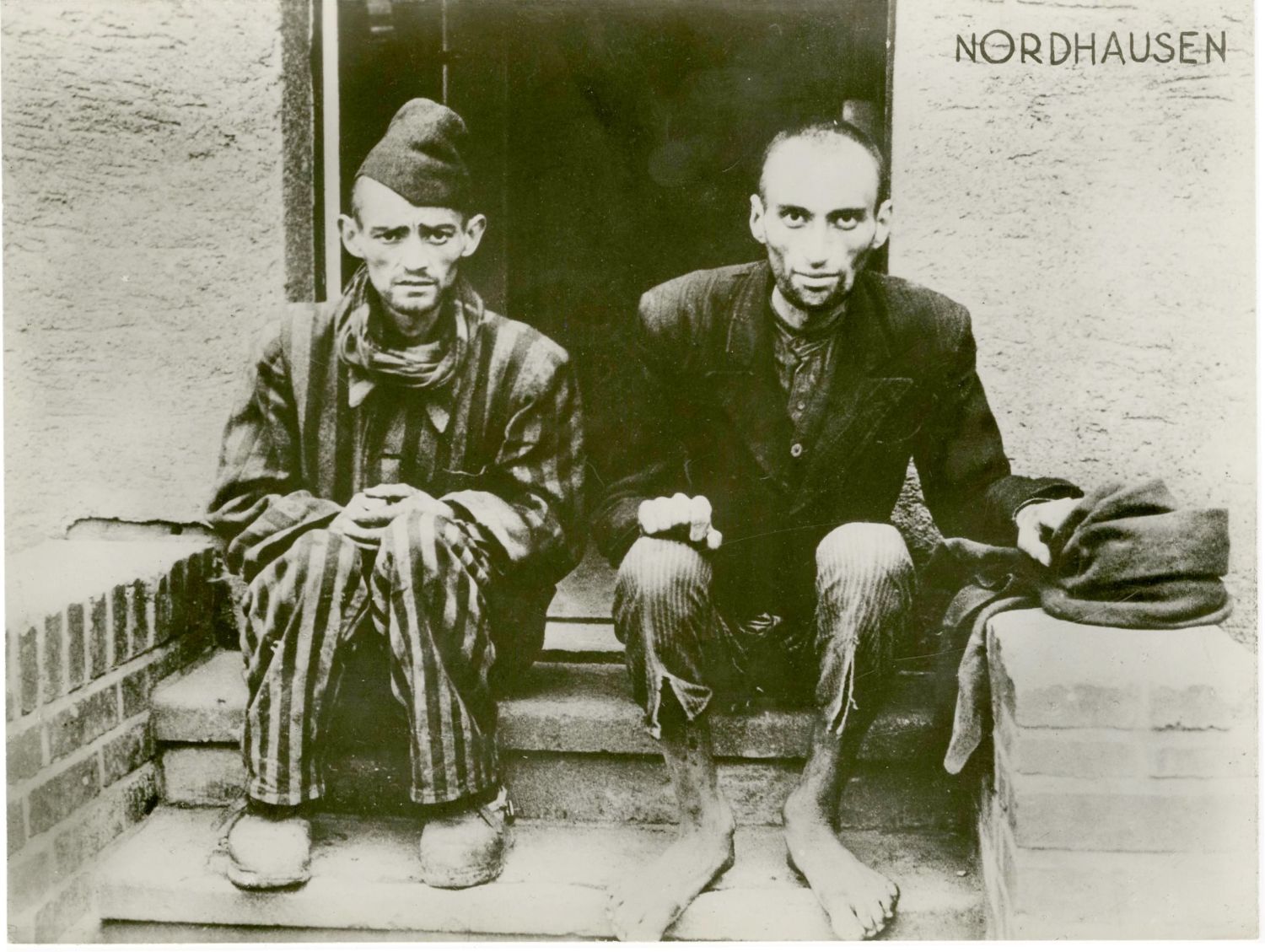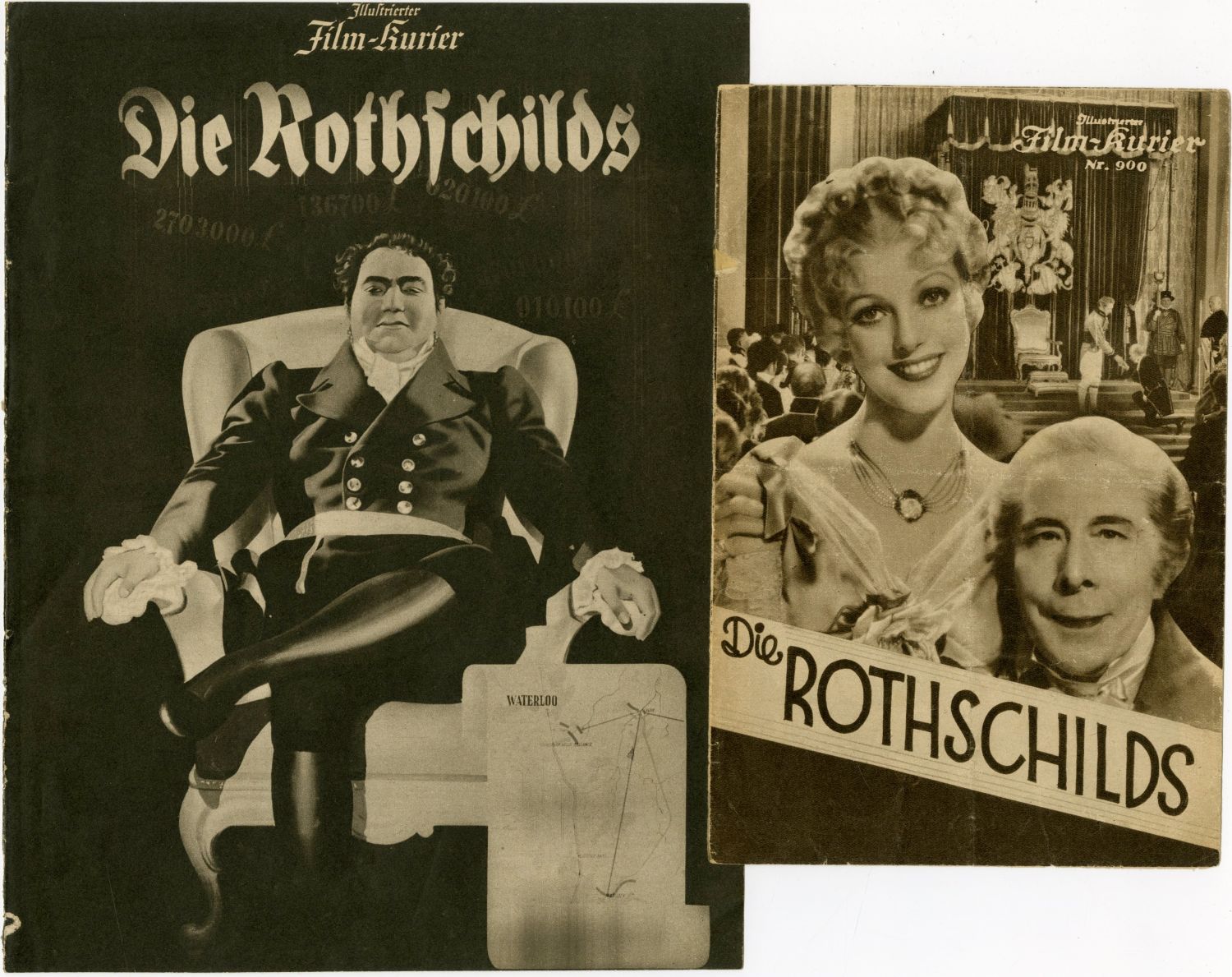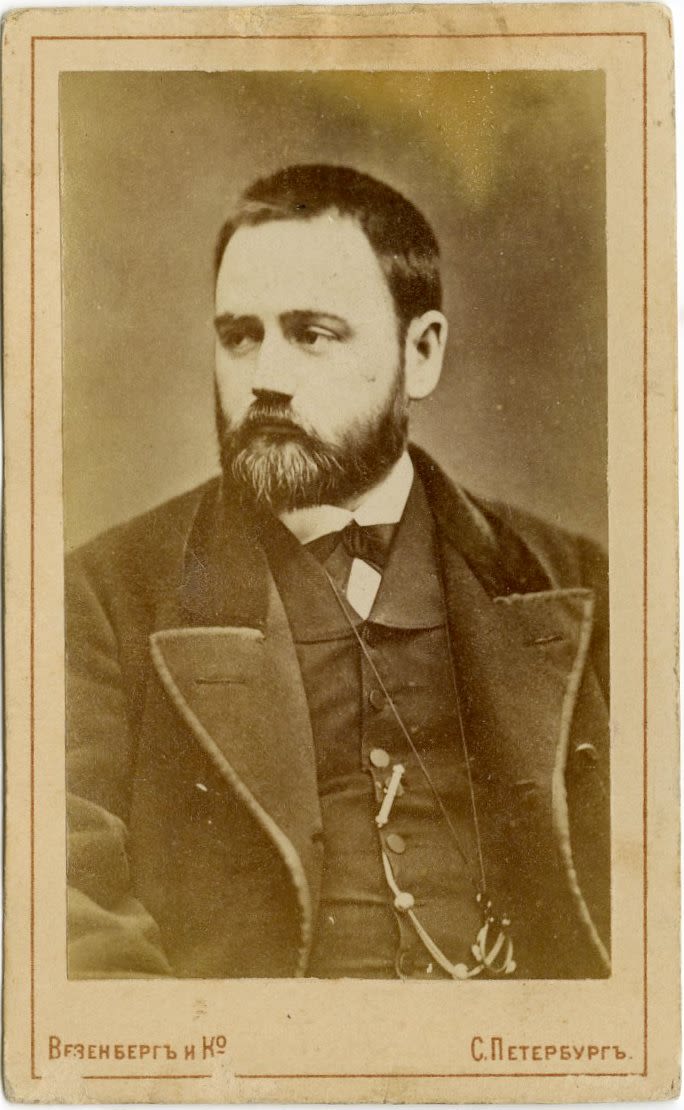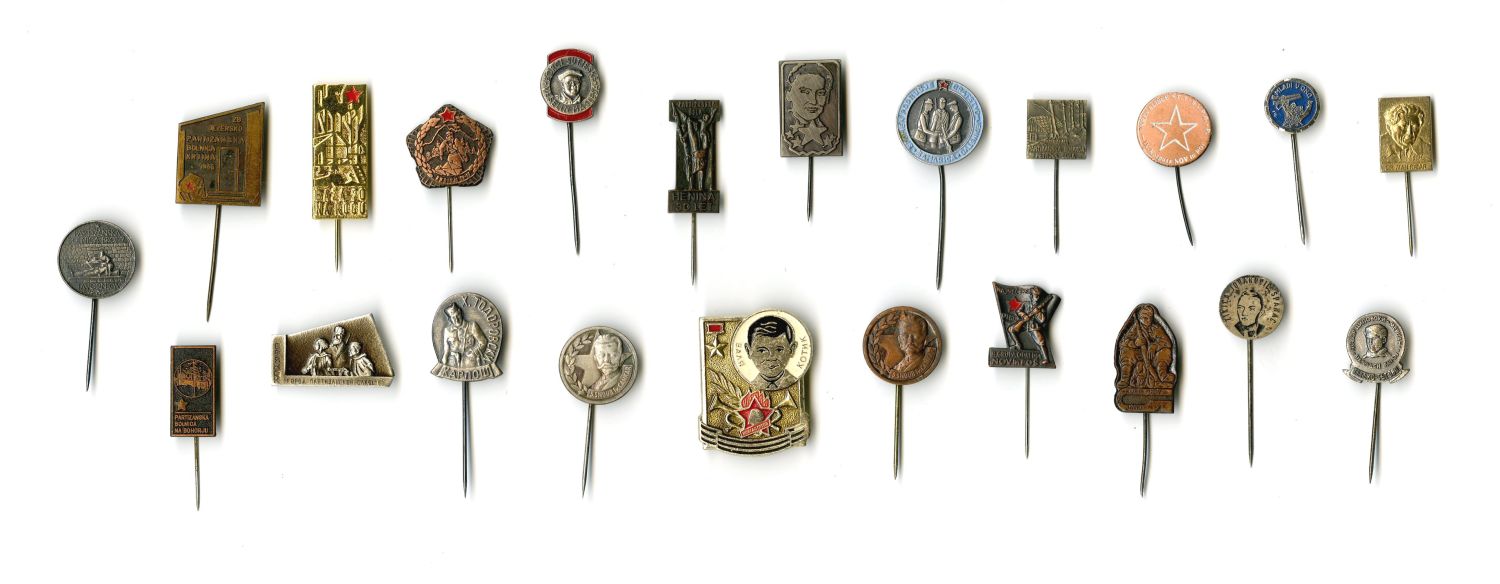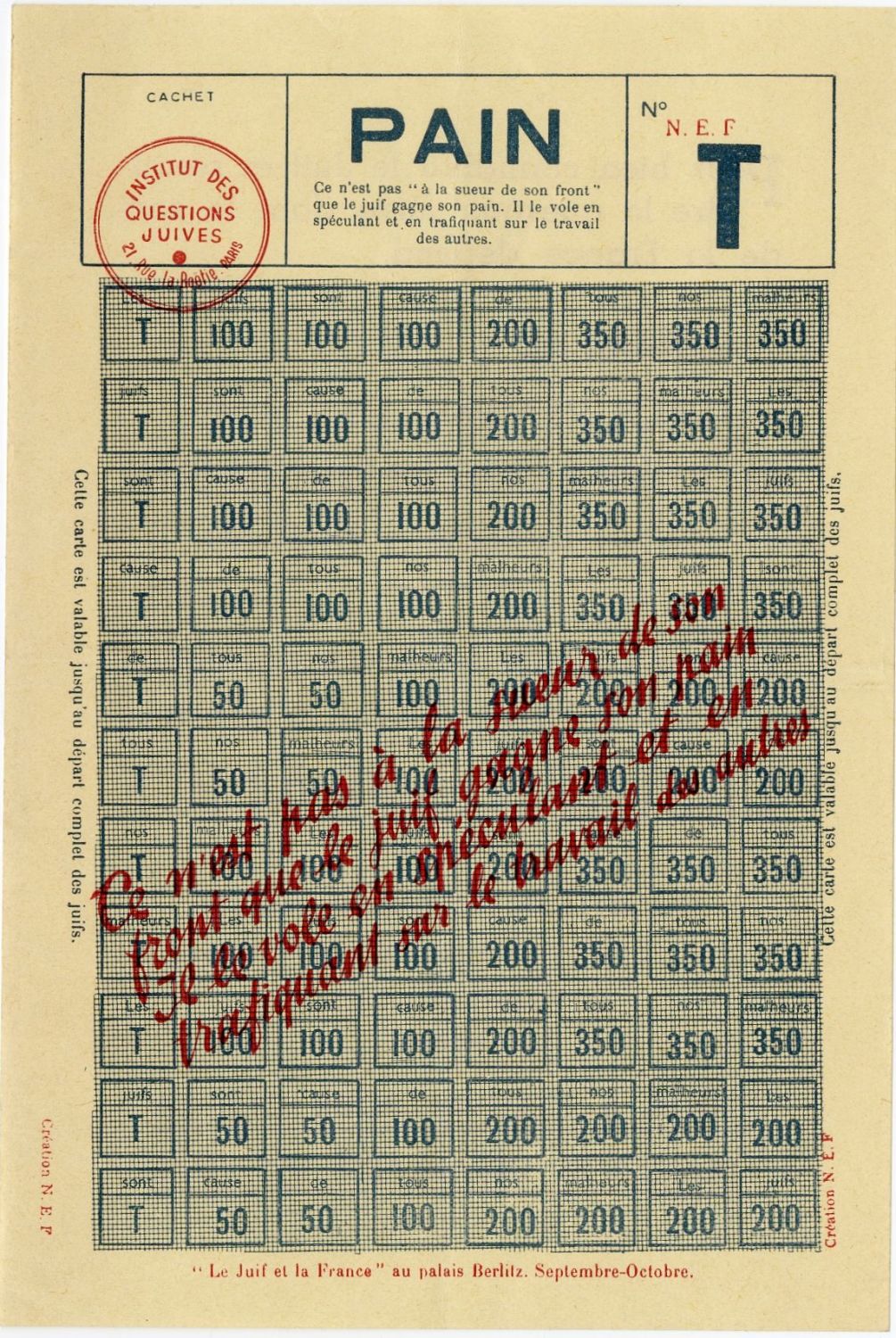!...Les camps de la mort. Husum ... ici on extermine! ... - Death camps, Husum, here we exterminate! ..." - Rare and only testimony of a former prisoner of the Husum death camp - A subcamp of Neuengamme in Germany, by P. Jorand - Published by Imp. Vagner, Nancy, 1946 - First edition - Dedicated and signed copy by the author. French.
The author, a former prisoner of Husum camp, describes in detail the horrors that took place in one of the lesser known death camps. He published the booklet at the urging of friends who claimed they had heard nothing about what happened in this camp. According to his testimony, prisoners who arrived at the camp usually from France and the Netherlands, were tasked with digging anti-tank trenches. There was systematic starvation in the camp, dysentery afflicted almost all prisoners and every day prisoners died at the construction site from merciless beatings by the kapos. At Husum the prisoner’s walking route to work passed every day through civilian population living in nearby villages, this population noticed the daily abuse the prisoners underwent. The author was in Dachau and Neuengamme camps before being taken to Husum, and he testifies that the suffering at Husum was so much worse than the former two camps because at Husum the kapos had no commanders above them and were allowed to do whatever they wanted with the prisoners without any guidance from above. At Husum the corpses of prisoners beaten to death at the construction site remained where they were since prisoners were forbidden from removing them. Everywhere lay rotting corpses that the living prisoners were forced to continue working next to. Attempts by prisoners to bury these corpses without the kapos noticing cost them their lives. During the winter months rain fell ceaselessly in the area, and prisoner clothes were constantly wet, and they were forced to work under these conditions. Jorand documents harsh daily scenes of sadistic abuse both by kapos at the construction site as well as by camp “doctors” who harmed prisoners in various bizarre ways. Almost no prisoners survived Husum by the war’s end, some were transferred to other camps beforehand. In total about 20 survivors remained from Husum camp - the author among them.
The Husum-Schwesing camp in the Schwesing district of Engelsburg, about five km northeast of Husum, became a subcamp of the Neuengamme concentration camp on September 26, 1944 after serving in the early war years as camouflage post for the German air force. About 2,500 people from 14 countries were imprisoned there in fall 1944. 297 prisoners died as a result of forced labor, malnutrition and abuse. In September 1944 the residents of the Husum-Schwesing village were ordered to erect a double barbed wire fence around the camp and build tall guard towers at the four corners. The camp contained nine barracks, eight used for prisoner housing and one as an infirmary. On September 25 about 1,500 prisoners from Neuengamme concentration camp were transported to Husum-Schwesing in cattle cars of the German Reichsbahn. On October 20 another 1,000 prisoners arrived from Neuengamme. Most of the prisoners were Dutch, French, Danish and Polish citizens. Other prisoners came from countries like the Soviet Union and Germany itself. Using spades and pickaxes only, prisoners were forced to dig an anti-tank trench four to five meters wide and three meters deep and build battlefield positions and shelters in the heavy marshland. Prisoners stood in cold water and mud all day long. Meanwhile they were exposed to beatings by the kapos overseeing the workers. In December 1944 the site became completely useless due to changing military conditions. Husum-Schwesing camp closed and the remaining living prisoners returned to Neuengamme.
Extremely rare. Only one copy listed in global library catalog World Cat at a library in France.
39 p. 24 cm. Very good condition.


